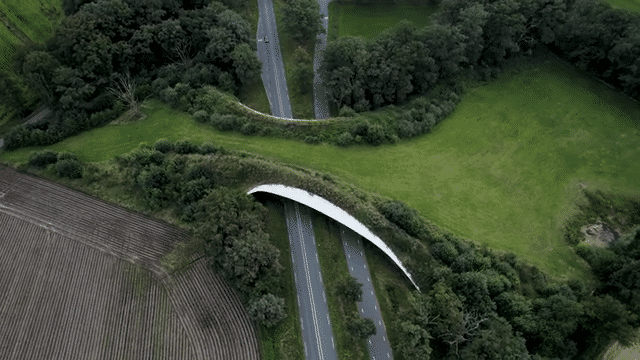
Apr 16, 2023 Exciting Developments for the Connectivity of Wild Landscapes
The Center for Large Landscape Conservation (CLLC), called Climate Conservation initially, was established by veterinarian and conservation biologist Dr. Gary Tabor in Bozeman, Montana, in 2011. WBI was delighted when CLLC agreed to be a WBI partner. Both organizations are building connections and partnerships to advance solutions to global problems. CLLC explicitly describes itself as a “Connector Organization.” The Center helps people address environmental challenges at the scale at which nature functions – namely, across large landscapes that are usually more extensive than the largest national parks in the USA. The Center is a community organizer for the environment, connecting disparate stakeholders who live in large landscapes and need to work together to address the connectivity of wild spaces so that biodiversity and local human communities can thrive.
Connectivity refers to the presence of land or water corridors that allow wildlife to migrate, disperse, mate, feed, and thrive. Linear human infrastructure, which includes roads, canals, and railroads, disrupts wildlife connectivity. For example, the busy freeways crisscrossing Southern California often prevent mountain lions and other wildlife from dispersing into a new habitat.
When Dr. Gary Tabor and CLLC Senior Conservationist Rob Ament started collaborating on ecological connectivity policy work more than two decades ago, they had to explain a wildlife corridor to many people. Tabor was, therefore, very excited when the President publicly committed to “conserve wildlife corridors across agencies and across our entire landscape.” This was the first time a sitting US President mentioned landscape “connectivity” in a speech.
March 2023 was a special month for the cause of wildlife corridors and ecosystem connectivity. The government announced several landscape and conservation connectivity announcements, including the following initiatives.
The White House Council on Environmental Quality issued new guidance on integrating habitat connectivity considerations into federal agency planning and decisions on March 21, 2023. The introductory paragraph of the Guidance document notes that “[C]orridors have policy relevance because they facilitate movement of species between blocks of intact habitat, notably during seasonal migrations or in response to changing conditions. Connectivity and corridors are important across terrestrial, marine, and freshwater environments and airspaces. Increasing connectivity is one of the most frequently recommended climate adaptation strategies for biodiversity management. Connectivity allows wildlife to access needed resources and facilitates fundamental ecological processes. Furthermore, connectivity promotes climate adaptation and resilience by enabling wildlife to adapt, disperse, and adjust to changes in the quality and distribution of habitats, including climate-driven shifts in species’ geographic ranges. Since connectivity is vital to ecosystem health and functions, it is significant to humans as well and supports the strong cultural and spiritual connections that communities have to nature.” (Emphasis added)
In addition, thirteen states – California, Colorado, Florida, Massachusetts, Nevada, New Mexico, New Hampshire, Oregon, Utah, Vermont, Virginia, Washington, and Wyoming – currently have statutes or executive orders recognizing the importance of and the need to protect and restore connectivity and wildlife corridors.
The Federal Highway Administration announced (March 21, 2023) that it will soon open applications for a new $350-million Wildlife Crossings Pilot Program. CLLC played a leading role in the coalition that championed the creation of this new program and developed resources for interested applicants.
The Interior Department announced at the end of March 2023 that it would be issuing a new proposed Public Lands Rule on conservation and landscape health, including actions to “protect landscape intactness and habitat connectivity.” The comment period presents a once-in-a-generation opportunity for CLLC and the public to help shape the future of public lands and ensure the agency effectively addresses the growing problem of habitat fragmentation.
Following the announced initiatives, Dr. Gary Tabor of CLLC commented, “How exciting it is to see large landscape conservation and habitat connectivity go mainstream, as a growing number of powerful people and institutions embrace the belief that drives our work: for our communities and ecosystems to be resilient, we must keep them connected.”
These new national policy developments create a bright future for conservation, restoration, and stewardship in the 21st Century—one guided by strategic and data-driven coordination across sectors at scale and rooted in the principles of collaboration and inclusion.


